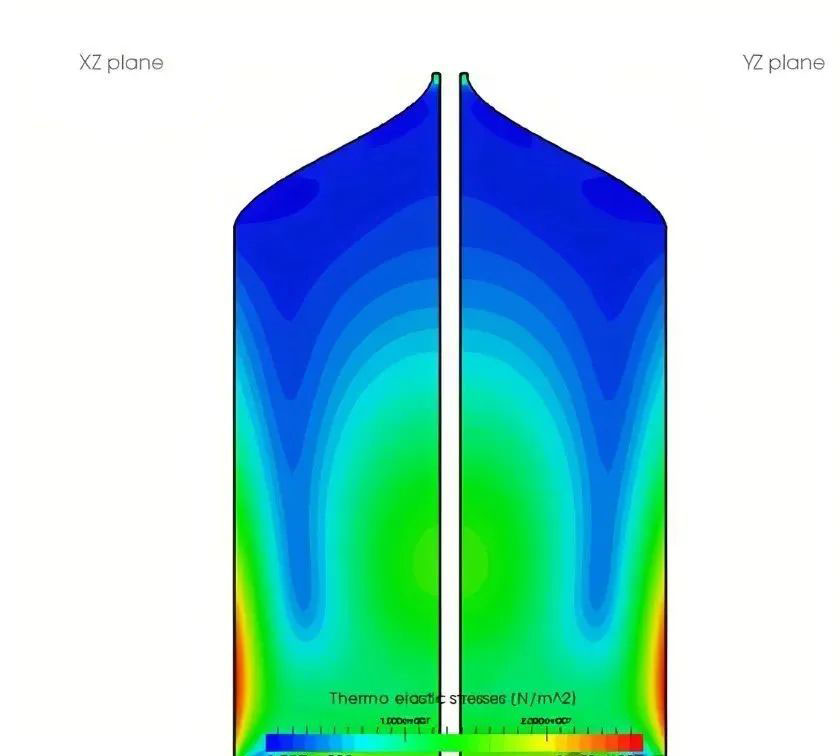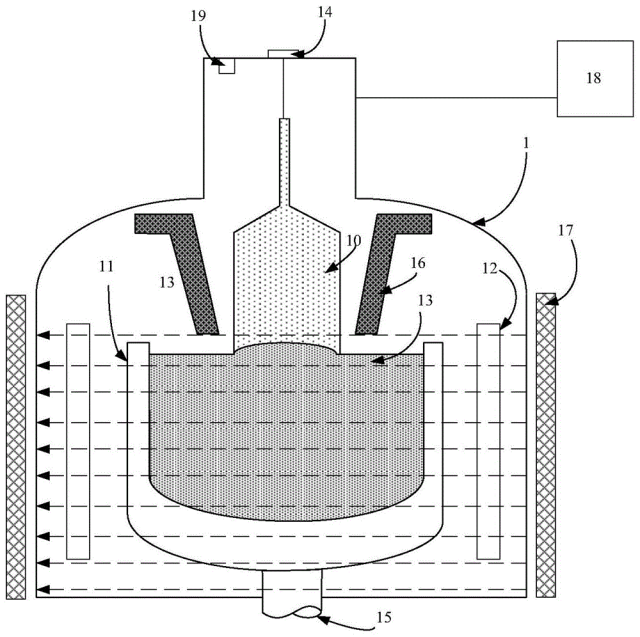The main reasons affecting the uniformity of radial resistivity of single crystals are the flatness of the solid-liquid interface and the small plane effect during crystal growth
The influence of the flatness of the solid-liquid interface During crystal growth, if the melt is stirred evenly, the equal resistance surface is the solid-liquid interface (the impurity concentration in the melt is different from the impurity concentration in the crystal, so the resistivity is different, and the resistance is equal only at the solid-liquid interface). When the impurity K<1, the interface convex to the melt will cause the radial resistivity to be high in the middle and low at the edge, while the interface concave to the melt is the opposite. The radial resistivity uniformity of the flat solid-liquid interface is better. The shape of the solid-liquid interface during crystal pulling is determined by factors such as the thermal field distribution and the crystal growth operating parameters. In the straight-pulled single crystal, the shape of the solid-liquid surface is the result of the combined effect of factors such as furnace temperature distribution and crystal heat dissipation.
When pulling crystals, there are four main types of heat exchange at the solid-liquid interface:
▪ Latent heat of phase change released by molten silicon solidification
▪ Heat conduction of the melt
▪ Heat conduction upward through the crystal
▪ Radiation heat outward through the crystal
The latent heat is uniform for the entire interface, and its size does not change when the growth rate is constant. (Fast heat conduction, fast cooling, and increased solidification rate)
When the head of the growing crystal is close to the water-cooled seed crystal rod of the single crystal furnace, the temperature gradient in the crystal is large, which makes the longitudinal heat conduction of the crystal greater than the surface radiation heat, so the solid-liquid interface convex to the melt.
When the crystal grows to the middle, the longitudinal heat conduction is equal to the surface radiation heat, so the interface is straight.
At the tail of the crystal, the longitudinal heat conduction is less than the surface radiation heat, making the solid-liquid interface concave to the melt.
In order to obtain a single crystal with uniform radial resistivity, the solid-liquid interface must be leveled.
The methods used are:
①Adjust the crystal growth thermal system to reduce the radial temperature gradient of the thermal field.
②Adjust the crystal pulling operation parameters. For example, for an interface convex to the melt, increase the pulling speed to increase the crystal solidification rate. At this time, due to the increase in the crystallization latent heat released on the interface, the melt temperature near the interface increases, resulting in the melting of a part of the crystal at the interface, making the interface flat. On the contrary, if the growth interface is concave toward the melt, the growth rate can be reduced, and the melt will solidify a corresponding volume, making the growth interface flat.
③ Adjust the rotation speed of the crystal or crucible. Increasing the crystal rotation speed will increase the high-temperature liquid flow moving from bottom to top at the solid-liquid interface, making the interface change from convex to concave. The direction of the liquid flow caused by the rotation of the crucible is the same as that of natural convection, and the effect is completely opposite to that of the crystal rotation.
④ Increasing the ratio of the inner diameter of the crucible to the diameter of the crystal will flatten the solid-liquid interface, and can also reduce the dislocation density and the oxygen content in the crystal. Generally, the crucible diameter: crystal diameter = 3~2.5:1.
Influence of the small plane effect
The solid-liquid interface of crystal growth is often curved due to the limitation of the melt isotherm in the crucible. If the crystal is lifted quickly during crystal growth, a small flat plane will appear at the solid-liquid interface of the (111) germanium and silicon single crystals. It is the (111) atomic close-packed plane, usually called a small plane.
The impurity concentration in the small plane area is very different from that in the non-small plane area. This phenomenon of abnormal distribution of impurities in the small plane area is called the small plane effect.
Due to the small plane effect, the resistivity of the small plane area will decrease, and in severe cases, impurity pipe cores will appear. In order to eliminate the radial resistivity inhomogeneity caused by the small plane effect, the solid-liquid interface needs to be leveled.
Welcome any customers from all over the world to visit us for a further discussion!
https://www.semi-cera.com/
https://www.semi-cera.com/tac-coating-monocrystal-growth-parts/
https://www.semi-cera.com/cvd-coating/
Post time: Jul-24-2024


